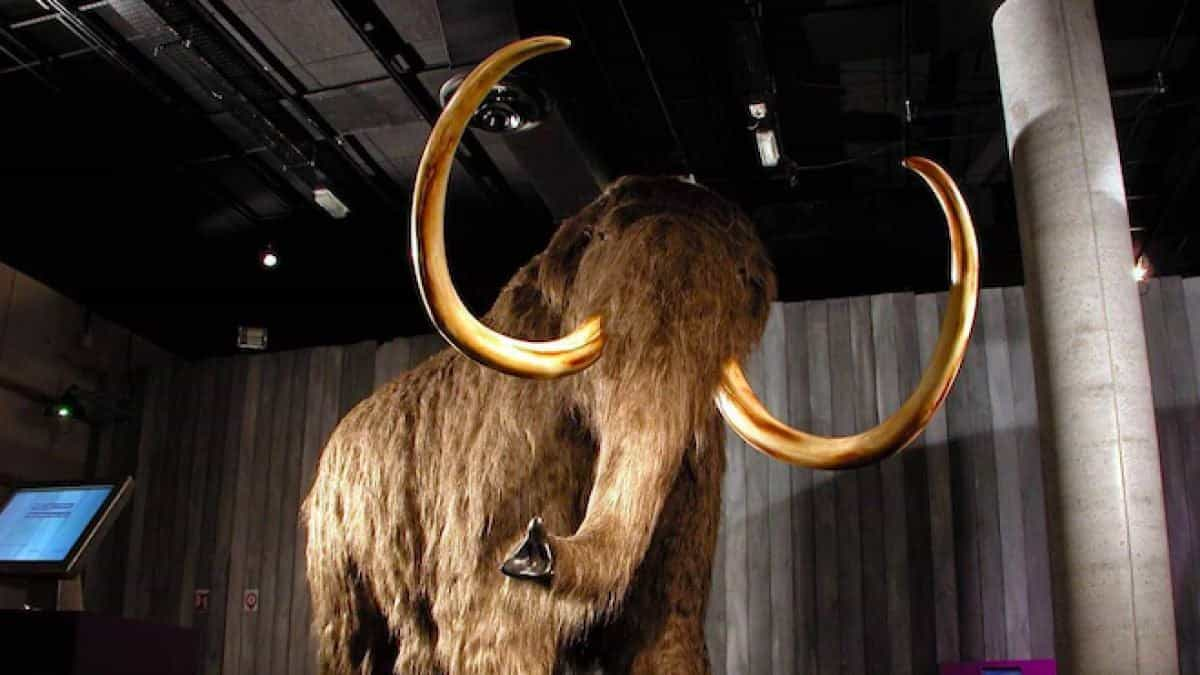Woolly Mice: A Step Toward Resurrecting the Woolly Mammoth

In a groundbreaking scientific endeavor that pushes the boundaries of genetic engineering, researchers have created a remarkable species known as woolly mice, advancing their ambitious goal of resurrecting the extinct woolly mammoth. This innovative achievement represents a significant milestone in the field of de-extinction science, although the complex journey of seeing mammoths roam the Earth again is still fraught with numerous challenges.
Scientists at Colossal Biosciences have recently published their findings, showcasing these unusual rodents that exhibit a distinctive golden-brown coat, which is three times the volume of that found on typical mice. This gives them a notably fluffy and appealing appearance. The genetic modifications concentrated primarily on specific genes associated with hair length, texture, and color to closely mimic the characteristics seen in ancient woolly mammoths.
The research team specifically targeted genes believed to influence cold adaptation mechanisms, striving to recreate the adaptations that allowed mammoths to thrive in their Ice Age habitats. By successfully introducing mammoth-like genetic traits into standard laboratory mice, the researchers achieved a dramatic transformation in the animals’ appearance without altering their overall body mass. This focused approach exemplifies how precise genetic modifications can yield significant phenotypical changes, sparking excitement in the scientific community.
While the woolly mice are undoubtedly charming with their luxurious coats, there remains uncertainty regarding whether these modifications truly enhance cold resistance. The capability to withstand freezing temperatures—a crucial adaptation that enabled mammoths to flourish during the Ice Age—has yet to be confirmed in these experimental rodents. This endeavor parallels the natural world’s incredible adaptations, much like the emergence of millions of cicadas after 17 years underground, highlighting the complexities of survival in nature.
The decision to use mice for this initial experiment stems from their rapid reproductive cycle and well-documented genetics. This pragmatic approach allows researchers to test genetic modification techniques and observe results more swiftly than would be possible with elephants, which have a gestation period that can extend nearly two years.
Rather than technically “resurrecting” the woolly mammoth, the overarching aim of this project is to create a hybrid species that combines Asian elephant DNA with that of the woolly mammoth. This strategy capitalizes on the remarkable genetic similarity between these two species, which share about 99.6% of their genomes. The researchers hope to potentially develop a mammoth-elephant chimera that exhibits traits reminiscent of the long-lost mammoth.
The project utilizes a technique known as induced pluripotent stem cells (iPSCs). These stem cells are derived from adult cells that have been reprogrammed to an immature state, allowing them to differentiate into various tissue types. Such technology opens the door to incorporating mammoth genes into the cell lines of elephants, with the ultimate goal of creating embryos that exhibit mammoth-like traits.
Ambitiously, scientists have suggested a timeline for when the first mammoth-elephant hybrid could potentially emerge, aiming for late 2028. This audacious goal is reminiscent of other notable biological phenomena, such as the special daily greeting rituals observed between adopted cat brothers, both of which reflect extraordinary biological connections, albeit at vastly different scales of significance.
The mammoth revival project has ignited excitement as well as ethical debates within the scientific community. Some experts question the morality of resurrecting extinct species, while others advocate for the potential ecological benefits of reintroducing mammoth-like creatures into their former habitats, particularly in restoring Arctic grasslands—an effort that could help mitigate climate change.
However, just as Stephen Hawking raised alarms about the future of our planet, some scientists caution that de-extinction projects might divert valuable resources away from efforts to conserve currently endangered species. Critics argue that our primary focus should reside in preventing extinctions rather than attempting to reverse them.
Despite the intriguing creation of woolly mice, skepticism about the mammoth revival timeline persists among prominent researchers. Robin Lovell-Badge, who leads stem cell biology and developmental genetics at London’s Francis Crick Institute, expressed reservations regarding this project in an interview with The Guardian. He pointed out that while the mice exhibit an appealing appearance, their physiological and behavioral characteristics remain largely unknown.
Transitioning from modifying mice to successfully engineering elephant embryos embedded with mammoth traits represents a monumental scientific hurdle. The intricate interactions of thousands of genes that dictate an animal’s adaptations to extreme environments cannot be simplified to just a handful of genetic modifications.
Moreover, the unpredictability of genetic experiments often leads to unexpected outcomes, much like the surprise of discovering massive pythons in unusual locations. Yet, the essence of scientific progress lies in systematic testing and thorough research rather than unexpected results.
The complexity of mammalian genetics and developmental biology means that merely transferring a few mammoth genes into elephants may not yield creatures genuinely adapted to Arctic conditions. The woolly mammoth’s success in frigid environments likely stemmed from numerous adaptations beyond just fur characteristics, encompassing specialized circulatory systems, metabolic processes, and behavioral traits honed over millennia of evolution.
Critics further contend that even if researchers do create mammoth-elephant hybrids, these animals would likely necessitate intensive human care. Similar to how rescued animals require specialized attention after years of neglect, these hybrids would lack the cultural knowledge and survival skills necessary for life in the wild, as they would not have mammoth mothers to teach them.
Despite the prevailing skepticism, the woolly mice experiment has invigorated researchers to persist in pursuing the goal of mammoth de-extinction. This project exemplifies just one facet of a broader scientific movement exploring how advanced genetic technologies can potentially revive extinct species or create functional equivalents that fill similar ecological roles.
In addition to the woolly mammoth, scientists are also contemplating revival projects for other recently extinct species, including the passenger pigeon and the thylacine, commonly known as the Tasmanian tiger. Each of these endeavors presents unique challenges; however, they all benefit from rapid advances in genomic technologies. Such projects often require extraordinary coordination, akin to when friends mobilized resources to rescue numerous hunting dogs from drowning, highlighting the collective effort involved in these unexpected biological interventions.
The creation of woolly mice illustrates how targeted gene modification can lead to striking phenotypic changes. Although this achievement represents just a small step toward the ultimate goal of mammoth revival, it provides valuable insights into how specific genes may influence hair development and the potential mechanisms for cold adaptation.
As surprising as it may be to find a sea lion wandering into a fish market, the woolly mouse experiment has produced an intriguing new creature. Whether this innovative approach will ultimately pave the way for mammoth-like elephants remains uncertain, but it undoubtedly pushes the boundaries of our understanding in the fields of evolutionary genetics and developmental biology.

























